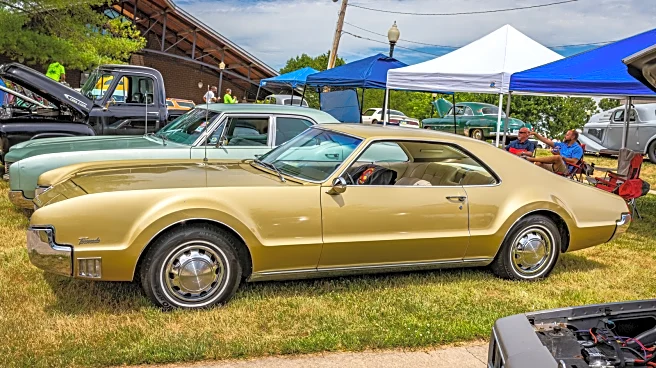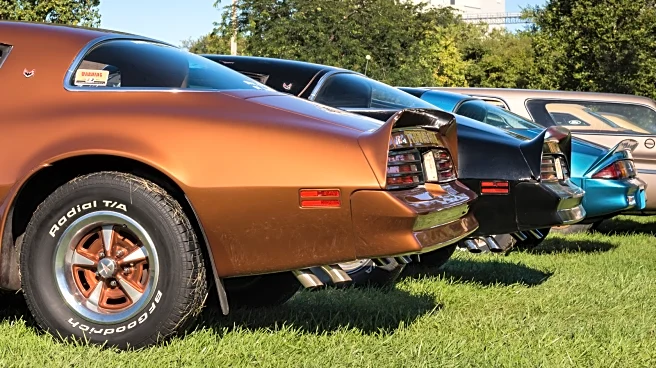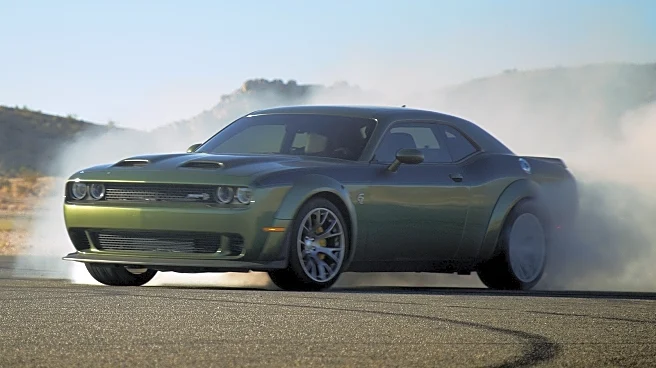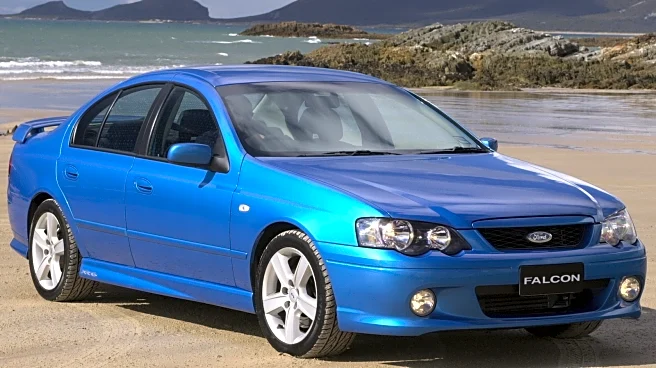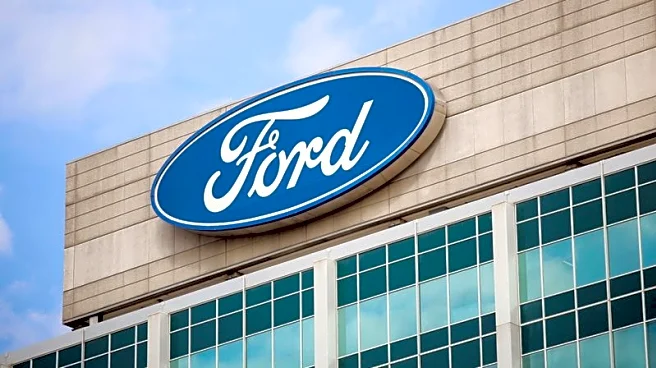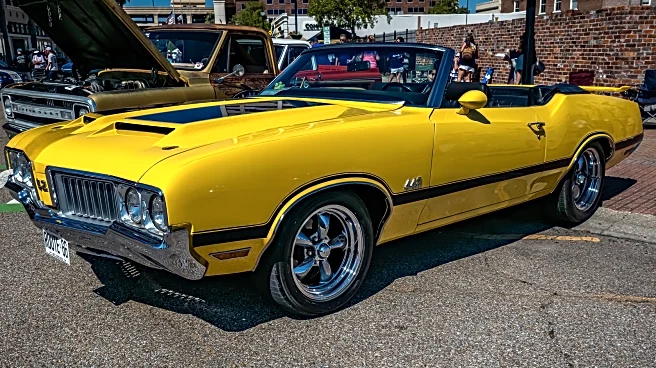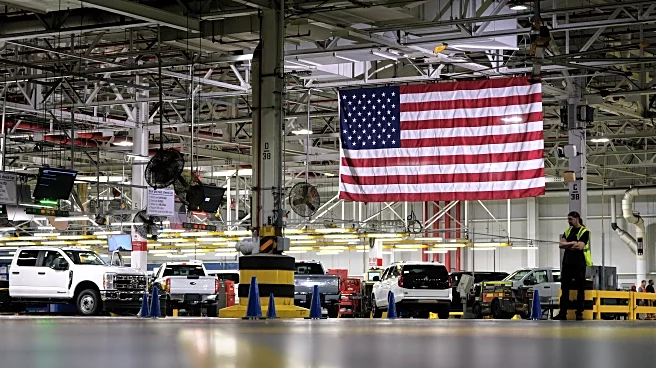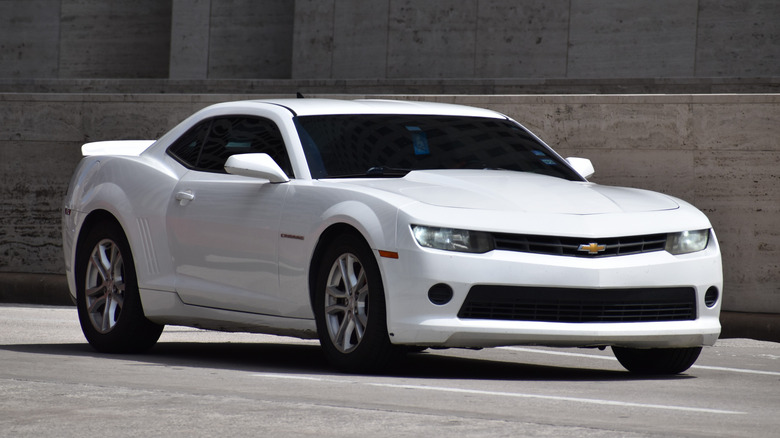
General Motors, or GM for short, has owned many different vehicle manufacturers over the years. As a result of all these decades of experience, GM has made some amazing vehicles. Alongside that, the company has made some spectacularly stupid decisions about shuttering brands. The GM conglomerate has bought, sold, and even killed off entire corporations, and it has done this time and again. In more cases than one, GM makes a car, builds a loyal following, then pulls the plug inexplicably. Something
that is extremely frustrating about this move -- other than the obvious -- is that many of these cars were just beginning to gain momentum when GM decided to swing the axe. Some were pure American muscle cars, some were luxury land yachts, and still others were top-of-the-line sports cars.
A common theme is that each of these cars had devoted followers who watched in horror as GM announced the demise of their favorite nameplate, often replacing it with watered-down alternatives that satisfied nobody. This would, in turn, leave enthusiasts to hunt for surviving examples on the aftermarket while wondering what might have been. We've already told you about five models that GM should never have axed. Now, we're back to tell you about five more GM vehicles that should still be ruling the road today.
Read more: 11 Of The Fastest Dodge Cars Ever Made, Ranked By Top Speed
Pontiac Firebird
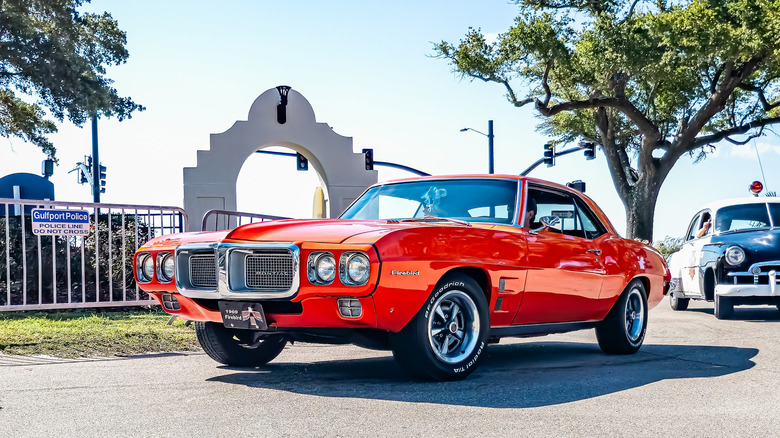
First up, we have the poster car of every enthusiast who grew up in the 1970s and 1980s, the Pontiac Firebird. Originally released in 1967, the Firebird would see four generations before being killed off in 2002. The debut engines included a 3.6-liter (230 cubic inch) I-6 unit that churned out 165 hp and 216 lb-ft of torque, with a top speed of 114 mph, and did zero to 62 mph in 10.2 seconds. Throughout the years, many different engines were offered on the Firebird, but the most legendary one was, perhaps, the 345 hp, 430 lb-ft RAM air IV introduced in 1969.
The Firebird was one of many models that suffered during the Malaise Era associated with the gasoline and automotive sales crises of the 1970s and 1980s. General Motors was nosediving towards bankruptcy before being bailed out by the second Bush administration, but it would be too little for the Firebird and all of Pontiac. Also, the particular factory in which these cars were made had to be shuttered by 2002 because it was not meeting federal impact collision standards.
In between the glorious V8 engines, the Firebird also had a 2.5-liter (151 cubic inch) I-4 unit that was making a paltry 90 hp and 132 lb-ft of torque. However, we must admit that the Firebird, in any form, was one of the most American vehicles ever to exist, and that it did not get the respect it deserved with an unceremonious seeing out.
Pontiac GTO
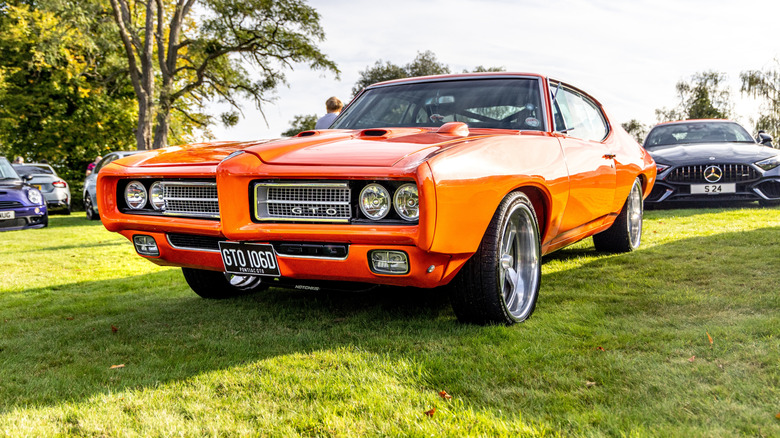
The Pontiac GTO was introduced way back in 1964, and was arguably the model that kick-started the muscle car craze in America. As a matter of fact, the Pontiac GTO is often said to be the first official muscle car ever produced. That said, the GTO did not start life as its own model. Rather, it was a trim option offered on the Pontiac Tempest, which itself was later renamed to the Pontiac LeMans. In 1966, the GTO became its own nameplate, following all the blueprints, including a mile-long hood, massive engine, short, squat silhouette, and brilliant straight-line speed. The base-model GTO from 1966 came with a 6.4-liter (389 cubic inch) V8 unit making 375 hp and 424 lb-ft of torque. This was paired with a three-speed transmission on the entry-level trim.
The Pontiac GTO had a unique discontinuation story, as it was discontinued twice. The first of these axings came about in 1974, when it ceased to be its own model. Instead, it returned to being a trim option, this time on the Pontiac Ventura. Then, towards the end of Pontiac's life, the GTO would be given a revival in 2004. This revival would be extremely short-lived, as the GTO would be killed off again in 2006, this time for good. Furthermore, any hopes of a revival went away when the Pontiac brand as a whole was scrapped in 2010.
Chevrolet Camaro
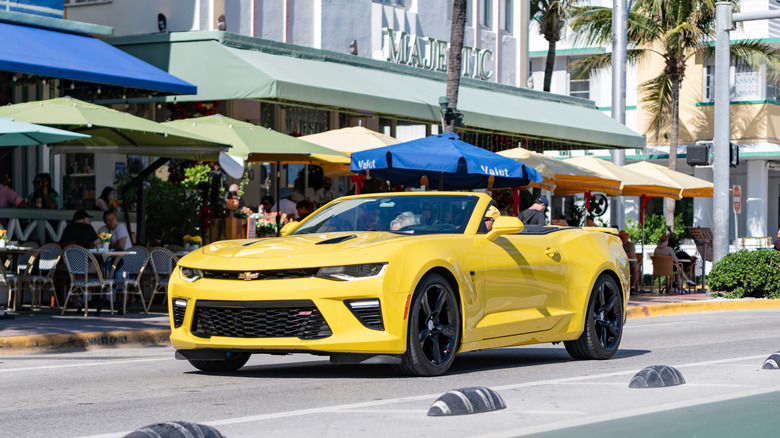
The Ford Mustang and Chevrolet Camaro were like the duo of the NFL and NHL. People fell firmly into support of one camp and always booed the other. However, if one were to cease to exist, everyone would be sad, like an old friend had died. This was the overarching sentiment when Chevrolet announced that the 2024 model year Camaro would be the last, as it was to be discontinued. It was a fantastic car, having roared onto the scene in 1967, debuting with a 3.8-liter (230 cubic inch) V6 unit. This powerplant produced 140 hp and 220 lb-ft of torque, sending its grunt to the wheels via a three-speed manual transmission. It would, just like the Pontiac GTO from above, be cancelled not once, but twice. The first discontinuation came about alongside the GTO, in 2002 -- the death of both cars was announced at the same time.
However, while the GTO was revived two years later in 2004, the Camaro would remain dead for a bit longer. It would be revived when Pontiac died for good, in 2010, and would remain in production until 2024. At this moment in time, it is not clear when the successor to the Camaro will come out, though GM has said the nameplate will live on in the future. Looking at the Mustang Mach-E, there's also a serious possibility that the Camaro revival might be an EV. And while we're not against EVs at all, it wouldn't be the same.
Buick Riviera
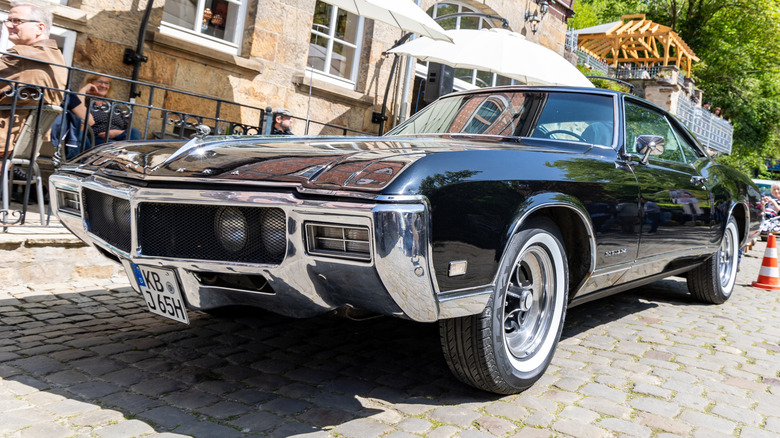
Unnecessarily long, vastly overpowered (before the gas crisis, anyway), rather comfortable, and just excessive in every way, the next car on our list is the iconic Buick Riviera. You see, by the 1950s, Ford had basically gotten a handle on the entirety of the sport-luxury car market through the Thunderbird model. The GM group needed to come up with something to match that particular car, so it rushed the development of the Pontiac Grand Prix and the Oldsmobile Toronado. However, the real GM competitor to the Ford Thunderbird ended up being the Riviera from Buick, which launched in 1963. It debuted with a 6.6-liter V8 engine that made 329 hp and 445 lb-ft of torque.
The Buick Riviera was huge too, at 208 inches long, 53 inches tall, and 76.3 inches wide. Despite its size, the Riviera was also performance-focused. Standing to 60 mph could be achieved in under 8 seconds, which was pretty impressive for the time, and the Riviera once achieved a top speed of 118.4 mph. One of the standout features on the Riviera ended up being its headlights, which remained hidden until they were needed. The car would achieve decent sales success, with over 110,000 units of the first-gen model sold. It was discontinued in 1999, after a production run of 36 years. It was truly a loss for the motoring world, which would never see another car quite like the Riviera.
Cadillac CTS-V
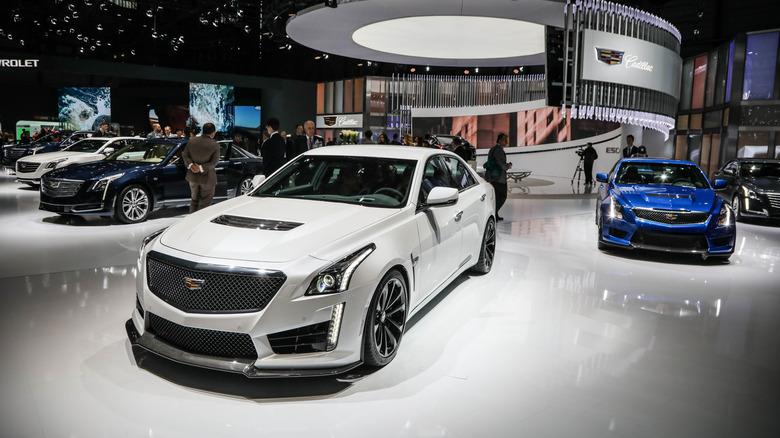
The CTS-V from Cadillac was in production until quite recently. It was a luxury sports sedan that had one of the nicest, most aggressive front fascias of any car, ever. Additionally, the CTS-V was not its own model, but rather, a beefier, souped-up version of the base model Cadillac CTS that was also quite sporty in its own right. The CTS-V was priced at $83,995 when it launched, going all the way up to $89,290 in its final 2019 production year. While often compared to more luxury options such as the AMG E63S and BMW M5, the CTS-V was really in a class of its own.
Engine options on the CTS-V included the default 6.2-liter V8 unit that made 640 hp and 630 lb-ft of torque. This was the only engine option on the last-generation CTS-V that ran for three years. The zero to 62 mph time was 3.8 seconds, and the car had a maximum top speed of 200 mph, which was impressive on its own, but even more so when you consider that it weighed 4,145 pounds. It was, at the time, the most powerful production vehicle that Cadillac had ever made, being eclipsed only by the modern Escalade-V. A similar offering is still on the cards through 2026 from Cadillac, in the form of the CT5-V and the legendary CT5-V Blackwing.
Want the latest in tech and auto trends? Subscribe to our free newsletter for the latest headlines, expert guides, and how-to tips, one email at a time.
Read the original article on SlashGear.
